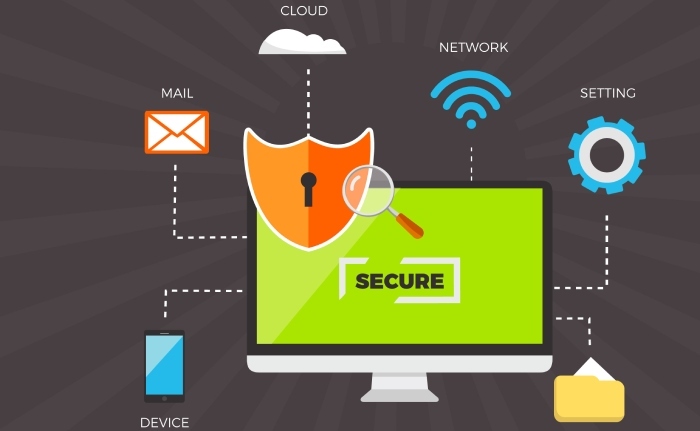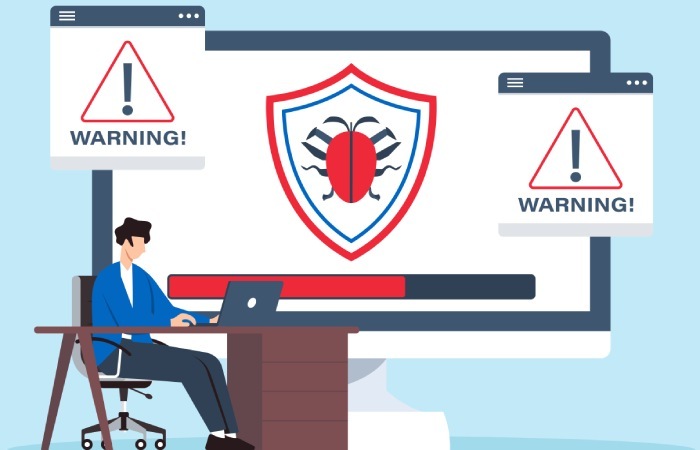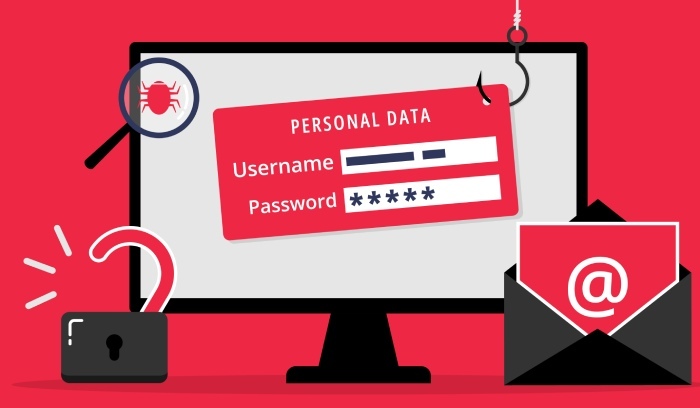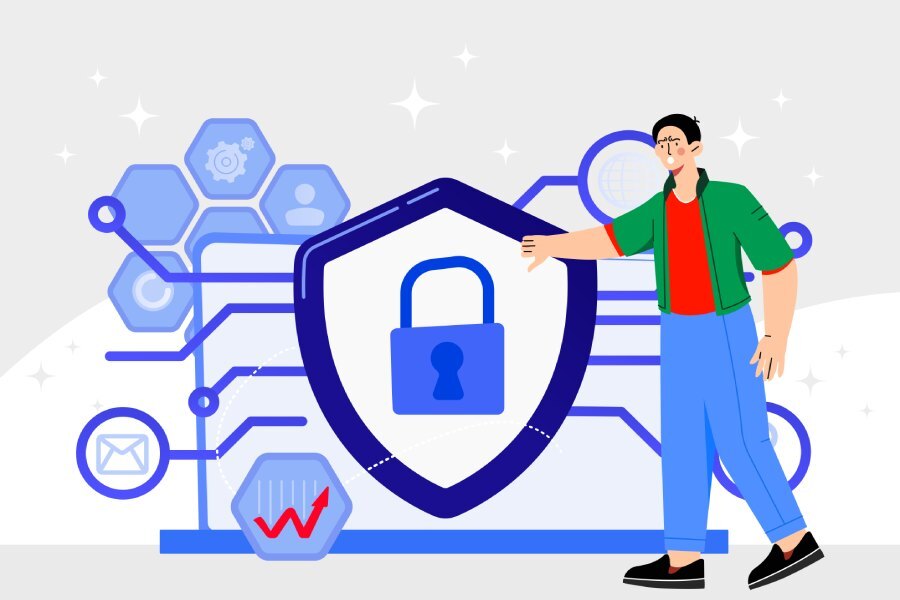AI-powered phishing in 2025: how intelligent attacks are outsmarting cybersecurity defenses
Email remains the primary attack vector for almost 70% of the breaches. Phishing has advanced from general scams to highly specialized spear-phishing driven by artificial intelligence.
Attackers employ AI to imitate writing style, taking over email threads, and impersonating sender identities at high success rates, evading traditional security defenses such as SPF, DKIM, and DMARC. The AI-written phishing emails are perfect, tailored, and resemble actual human conversations, hence almost undetectable.
With automated A/B testing and polymorphic methods, they change and evolve constantly, bypassing signature filters. AI-based phishing can cost as little as $50, making it easier and faster to trick people into sharing their private information or downloading malware.

How do attackers exploit AI to bypass security filters?
Threat actors begin by harvesting publicly available data from platforms like GitHub, LinkedIn, and breached email logs to build detailed behavioral profiles, mimicking the tone and writing style of trusted colleagues. Using generative AI, they can produce thousands of highly personalized phishing emails within minutes, continuously optimizing them for higher engagement and click-through rates.
Lookalike domains further fuel Business Email Compromise (BEC) attacks by hosting decoy websites, facilitating fraudulent wire transfers or invoice scams that can result in six-figure losses.
AI-driven personalization adds a new layer of sophistication: messages are tailored to the recipient’s job role, ongoing projects, and digital footprint, making them feel legitimate and harder to flag as spam.
Polymorphic malware and constantly changing attachment hashes or redirecting URLs help attackers evade detection from sandboxes and link scanners.

Even voice phishing (vishing) has evolved—AI-generated deepfake voices now convincingly impersonate executives during calls to extract credentials. In fact, 30% of organizations reported falling victim to such AI-enhanced voice scams in 2024.
Types of AI-powered phishing attacks
Malicious actors are often the earliest adopters of new technology, sometimes even before CISOs know it exists. It wouldn’t be a stretch to say tools like ChatGPT and Bard were first explored by attackers, not everyday users.
Here are some of the most advanced phishing tactics that have evolved thanks to generative AI, making them smarter, more convincing, and far harder to detect.
Pop-up phishing
Phishing through pop-ups employs graphic or provocative notices on websites or computer desktops requiring instant action from the user. Pop-ups usually state that the system has a virus or infection and request that victims download simulated antivirus software. The sense of urgency creates panic and triggers victims to download malware or give away sensitive information.

Watering hole phishing
In watering hole attacks, cybercriminals target specific individuals through websites they visit regularly, like industry forums or internal portals, or even something not related to their work, like a local food-ordering platform. These websites become infected upon attack and deploy malware to their visiting clients by exploiting their browsers. The method is targeted and efficient since it uses their trust in familiar virtual spaces to carry out attacks.
Commodity phishing-as-a-service (PhaaS)
What were once costly, AI-driven phishing tools are now available for as little as $50 per week. Even individuals with no technical expertise can use them to craft spoofed emails or generate basic malware. This low-cost accessibility has significantly lowered the barrier to entry, enabling a larger pool of attackers to launch sophisticated phishing campaigns.
Vishing (voice phishing)
The attackers clone executives’ or government officials‘ voices via AI and call employees pretending to be someone in authority and asking for money or personal information. The impersonation calls sound extremely convincing and cannot be detected as false calls easily.

Ransomware via phishing
AI-based phishing attacks are wreaking havoc on the coffers of businesses. Attackers use social engineering skills to manipulate executives into downloading malware-infected files, which gives them access to their systems. Once inside, threat actors encrypt sensitive and highly confidential files, demanding a hefty ransom in exchange for decryption keys.
In fact, a report by IBM revealed that businesses hit by ransomware—often delivered through phishing emails—incurred an average cost of nearly $5 million. As attackers become more sophisticated, these phishing tactics are fooling more people than ever before.
Angler phishing
Angler phishing takes advantage of social media platforms by impersonating brands or customer service representatives to trick consumers. Attackers set up imposter accounts pretending to be legitimate customer service accounts and encourage consumers to provide account credentials through direct messaging. The tactic relies on trust and urgency and often dupes victims before they even realize they’re being scammed.
How to stay safe from AI-powered phishing attacks?
Gone are the days when words like ‘Free’ or poor grammar were the red flags of a phishing communication. Now, these AI-driven attacks make every sentence hyper-personalized and convincing. But don’t worry—while phishing has evolved, so have the ways to protect yourself.
Strengthen your email security
Equipping yourself with tools like SPF, DKIM, and DMARC prevents impersonation emails from finding their way to your and your team’s inboxes. Layer on some AI-powered spam filters, and you have a clever bouncer capable of detecting even the sneakiest of emails.

Observe for unusual behaviour
AI-authored emails can now be so convincing that it’s impossible to determine if a message came from a human or a machine. That’s where behavior analysis and NLP tools become essential. These tools will identify slight variations in the tone of writing, unusual sender behavior, or unusual email traffic volumes that could indicate something’s wrong. It’s having a wise assistant monitoring anything suspicious.
Guard against malicious links/websites
Phishing emails also contain links that seem legitimate but lead to malicious pages. DNS filtering and web protection software can prevent you from visiting those pages altogether. If you’re unsure what a link leads to, hovering over it will reveal it; software can do this for you and flag any unusual behavior, such as a misspelled address.

Train your team continuously
No matter how good the tech is, it can’t substitute a thoughtful, trained staff member. Frequent phishing simulations and bite-sized training sessions will upskill employees to identify modern red flags quickly. Use AI to conduct realistic phishing trials and instruct your staff to recognize fraud.
Also, establish some ground rules, like always double-checking before sharing sensitive files or sending money. A quick phone call for confirmation can make all the difference.
Being prepared to act quickly
If a threat slips through, you must be prepared. Add AI-specific threat information to your incident response playbook. Membership in ISACs (Information Sharing and Analysis Centers) will provide you with real-time information about newly identified scams and maliciously behaving domains. Make sure your systems will automatically quarantine suspect emails as you investigate.
You may not believe it, but organizations that extensively utilize AI and automation in their security operations have detected and contained breaches nearly 100 days faster, resulting in an average cost reduction of $2.2 million per breach.
Adhere to zero trust
Nobody gets a free ride in a Zero-Trust world, not even insiders at your own firm. Grant access only for what’s strictly necessary, change passwords and certificates regularly, and double-check requests if they’re about money or sensitive information.

Final words
AI has leveled the playing field for phishing, but it doesn’t mean that you are powerless. Businesses can outmaneuver even the fanciest scams by leveraging innovative technology and cyber-smart humans. Layer defenses, train your staff well, and keep ahead of the game. Because in 2025 and thereafter, cybersecurity is not about having good firewalls; it’s about outsmarting the machines trying to outsmart you.
So, if you are thinking of taking the first step towards protection, then reach out to us. We can help deploy, reconfigure, and manage SPF, DKIM, and DMARC for your domain— blocking all the phishing attacks attempted on your behalf.






